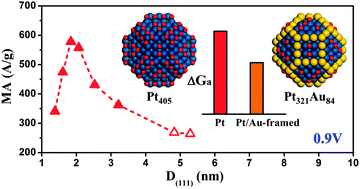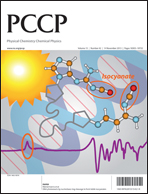Optimum nanoparticles for electrocatalytic oxygen reduction: the size, shape and new design†
Abstract
The electrocatalytic oxygen reduction reaction (ORR) on nanoparticles has attracted much attention in recent years for its significance in fuel cell applications. Here by combining density functional theory (DFT) calculations with the periodic continuum solvation model based on modified-Poisson–Boltzmann (CM-MPB) electrostatics, we analyzed the ORR activity on a set of differently sized Pt nanoparticles in order to identify the optimum particles for a better designed catalyst. We show that Pt nanoparticles of ∼2 nm size have the highest ORR mass activity, which is attributed to the variation of the effective reaction sites on the exposed {111} facet at the electrochemical conditions. We propose a type of a new nanocatalyst for the electrocatalytic oxygen reduction based on the knowledge from large-scale first principles simulations on Pt nanoparticles. The new catalyst has inert metal Au as the frame for the Pt nanoparticle and exposed Pt{111} sites are the active site for oxygen reduction. Such an architecture can not only prevent the initial O corrosion at the edge sites but also significantly improve the activity. The theoretical work provides a promising new direction for the rational design of a stable and active ORR catalyst via nano-structure engineering.


 Please wait while we load your content...
Please wait while we load your content...